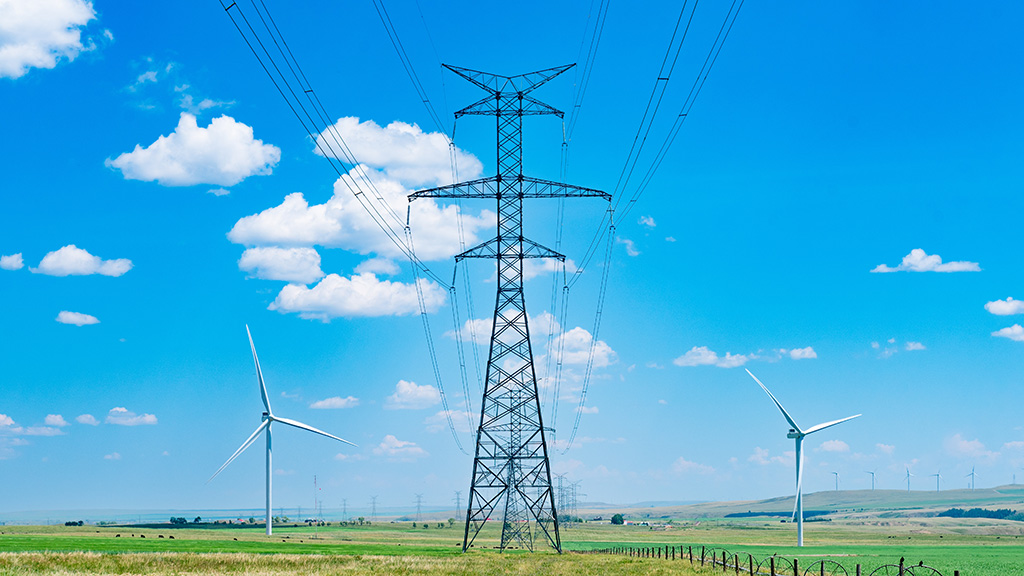As the global transition to renewable energy continues, capacity rebalancing solutions are needed to supplement intermittent sources and to accommodate new green-power generation.
Batteries, pumped hydro, supercapacitors, etc. are among the major solutions. “Smart” grids will play a critical role in integrating new power sources and regulating supply and demand for stability.
Today, production of electricity from renewable sources is increasing more rapidly than in the past. According to Renewables 2023, renewable energy capacity installed worldwide rose by 50 per cent in 2023 to reach about 510 gigawatts (GW), with solar photovoltaics (PV) making up three-quarters of new additions. By 2028, the deployment of onshore wind and solar PV is expected to double versus current levels in the U.S., E.U., India and Brazil.
The use of residential renewable generation has also increased as more homeowners choose to install solar panels and other clean electricity sources on their properties. Implementing solar energy systems is now more cost-effective than it was 10 years ago, with installation costs falling by almost 40 per cent.
- The SEIA estimates between 2023 and 2027, residential solar power in the U.S. will increase by 6,000 to 7,000 MW annually. By 2030, more than one in seven American homes will have solar panels installed. This rapid increase highlights a robust move towards distributed green energy that will also require strong expansion of smart grids.
Today, grids consist of a system of substations, transmission lines, transformers and other components that carry electricity from power plants to residences or places of business. Digital technology can allow electrical grids to adapt to rapidly fluctuating electricity needs. Smart grids speed up the restoration of power after outages and improve power transmission efficiency. They can also decrease peak demand, ultimately leading to a drop in electricity prices.
According to the Japanese government, achieving that country’s smart grid aspirations will be dependent on, and will hence focus on, smart meters, with other foundational components to include more solar PV capacity, systems for energy management, communication technology systems, battery storage systems and removal of restrictions from the electricity market.
The Institute for Electric Innovation states “as electric companies continue to manage, operate and invest in an increasingly digital energy grid, a critical next step is to continue to utilize the data generated from smart meters as a strategic asset to improve grid operations, use customer resources more efficiently, and offer new services to customers.”
Different countries are striving to expand their smart meter reach within overall smart grid installations. For example, China is replacing its first-generation smart meters with more sophisticated systems.
The country is anticipated to lead the world in implementing AMI (Advanced Metering Infrastructure). In coming years, China will account for 70 to 80 per cent of Asia’s total demand for smart electricity meters.
By 2029, the North American smart grid sector is projected to grow at a compound annual growth rate of more than six per cent. It is expected that 80 per cent of U.S. energy consumers will have smart meters by the end of 2024.
COVID-19 had a negative impact on the industry, but there has recently been a bounce back to pre-pandemic levels. Through 2029, the U.S. will dominate the smart grid sector in North America. Government support and targeted policies will be key aids.
By 2022, India had installed more than 50 million smart meters. The government has begun implementing various smart grid technologies, including Distribution Automation, Energy Management Systems and AMI. Nevertheless, the installation of smart grid technology in India still faces obstacles from an absence of technological standards, a lack of consumer awareness and poor funding.
In Europe, Germany has not kept up with its peers in terms of smart grid deployment. However, it is anticipated 44 million smart meter units will be installed in Germany by 2026, spurred on by $23.6 billion in smart grid infrastructure investment flowing, in part, from new regulations.
Large scale renewable energy projects, the growing use of residential power storage and solar systems generally have claimed critical places in the global energy landscape. As a result, effective capacity rebalancing solutions have become paramount for effective energy transition.
Integrating dispersed energy sources, boosting system resilience and optimizing power use are dependent on smart grids and enhanced metering infrastructure. The future for smart grids globally is bright, propelled by large investments and supportive government regulations.
Dmytro Konovalov has over 10 years of experience in equity research and analysis for global markets at leading international financial institutions.

